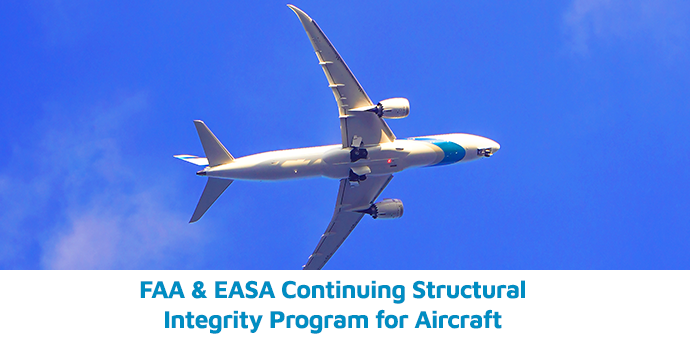Sofema Aviation Services (SAS) www.sassofia.com considers the fundamentals related to the development of supplemental structural inspection – Structural Integrity Program for Aircraft
Introduction
Please review the following website for historic events associated with structural integrity failure https://lessonslearned.faa.
The FAA issued – AC 91-56B dated 3/7/2008 updating the following information.
- Guidance traditionally applied to the following eleven large transport airplane models:
o Airbus Model A300;
o British Aerospace Model BAC 1-11;
o Boeing Models B-707/720,
o B-727, B-737, B-747;
o McDonnell Douglas Model DC-8,
o DC-9/MD-80,
o DC-10;
o Fokker Model F28; and
o Lockheed Model L-1011 series airplanes.
Note – For each of these models, airworthiness directives (ADs) were issued to mandate the implementation of damage tolerance based SSIPs. (Maximum take off gross weight greater than 75,000 pounds.)
SSIP Developments to Include Multiple Aircraft as follows:
Aging Airplane Safety Final Rule is applicable to all U.S.-registered transport category, turbine-powered airplanes, type certificate issued after January 1, 1958, with
- Passenger seating capacity of 30 or more; or
- Payload capacity of 7,500 pounds or more.
FAA – Supplemental Structural Inspection programs
The (TCH) is responsible to implement an SSIP.
Note 1 – Such a program should be implemented before analyses, tests, and/or service experiences indicate that a significant increase in inspection and/or modification is necessary to maintain the structural integrity of the airplane.
Note 2 – Typically for aircraft which are certified in accordance with MSG-3 and System Safety Assessment 25-1309 they are certified and comply with the need for a damage-tolerance based structural maintenance inspection programme (e.g. MRB report, ALS).
Regarding “other” Aircraft – The program should be initiated no later than the time when the high-time or high-cycle airplane in the fleet reaches one half its design service goal. (DSG)
This should ensure that an acceptable program is available to the operators when needed. The program should include:
-
- Procedures for obtaining service information
- Assessment of service information
- Available test data, and new analysis and test data
Developing the Inspection Program
The continuing airworthiness assessment process is required to adjust the current maintenance inspection program, to ensure the continued operational safety of the airplane.
- An allowable limit of the size of damage should be determined for each site such that the structure has a residual strength for the load conditions specified in § 25.571
- The size of damage that it is practical to detect by the proposed method of inspection should be determined, along with the number of flights required for the crack to grow from detectable to the allowable limit.
The recommended inspection program should give due consideration to the following:
- Fleet experience, including all of the scheduled maintenance checks;
- Confidence in the proposed inspection technique; and
- The joint probability of reaching the load levels described above and the final size of damage in those instances where probabilistic methods can be used with acceptable confidence.
Inspection thresholds for supplemental inspections should be established. These inspections would be supplemental to the normal inspections, including the detailed internal inspections.
- For structure with reported cracking, the threshold for inspection should be determined by analysis of the service data and available test data for each individual case.
- For structure with no reported cracking, it may be acceptable, provided sufficient fleet experience is available, to determine the inspection threshold on the basis of analysis of existing fleet data alone.
Note – This threshold should be set such as to include the inspection of a sufficient number of high-time airplanes to develop added confidence in the integrity of the structure.
Thereafter, if no cracks are found, the inspection threshold may be increased progressively by successive inspection intervals until cracks are found.
The design approval holder should revise the SSID whenever additional information shows a need.
Any revision to SSID criteria and the basis for these revisions should be submitted to the FAA for review and approval of both engineering and maintenance aspects.
Sofema Aviation Service www.sassofia.com offers training compliant with AMC4 CAMO.A.305(g) Personnel Requirements ED Decision 2020/002/R
Please see the following link https://sassofia.com/course/
For additional questions or to register please email team@sassofia.com
Tags:
Airbus Model A300, Airworthiness Directives, AMC4 CAMO.A.305(g), B-727, B-737, B-747, British Aerospace Model BAC 1-11, Continuing Structural Integrity Program, EASA, FAA, SAS training, Structural Integrity Program for Aircraft, Supplemental Structural Inspection program




